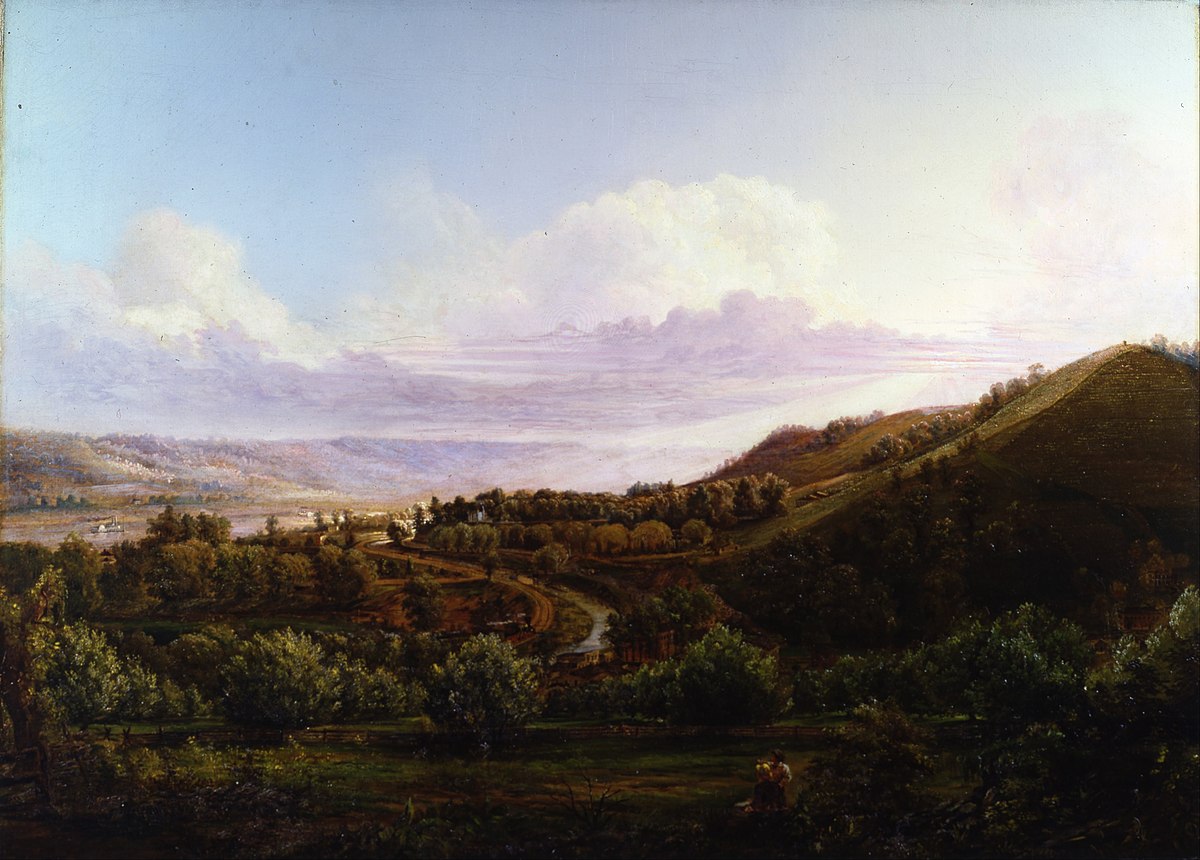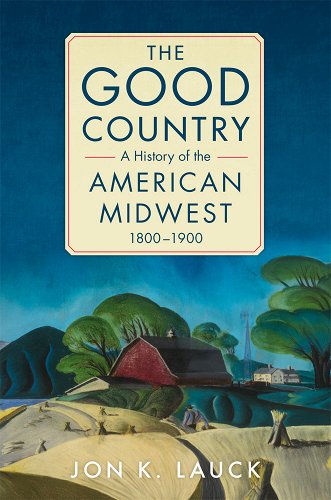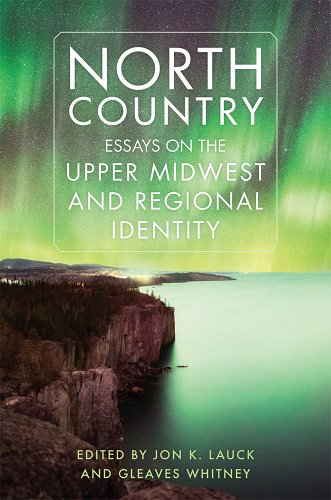“The web of our life is of a mingled yarn, good and ill together.”
– All’s Well That Ends Well
“It appears that liberty is bound up with imperfection, with a right to imperfection.”
– Nikolai Berdyaev, The End of Our Time
Reeds Spring, Missouri. I knew a man once whose grandfather was a bigamist. The old man had abandoned one family and taken up with another—the familiar story—never saying a word after about the people he had left behind, the history he had buried. My friend hadn’t learned the story until his grandfather was long dead, past any explanation or atonement. Lacking such context, my friend felt an understandable moral horror, deepened and extended by the knowledge that his own existence depended upon a grave wrong: had the old man kept his vows, stuck with his first wife and family, my friend would never have been born. Like any person of healthy mind, he couldn’t regret his own existence, and yet neither could he do anything to make right the wrongs that had resulted in his birth. He didn’t know how to contact his grandfather’s first family, nor did he have any reason to believe that they would want him to do so. He just had to live with this dizzying sense of the imperfections of his own history and to go about trying to redeem his grandfather’s evil in his own life as best he could.
The imperfections of our history tend to remain with us. Each semester as I read old books with students, we wrestle with how to receive these glaring evils in our own cultural inheritance. In The Odyssey, for instance, they find it hard to overlook Odysseus’ shameless adultery; I find it hard to overlook Telemachus’ brutal execution of slave women. And yet this is one of the central stories of our culture. Similar issues arise with practically any classic text, or any period of history, that you could name. We study these books and this history because we believe they have something to teach us—including something about the imperfections of our history. And yet we can struggle to know how to redeem those imperfections which seem to be part of who we are. We might like to leave them behind, to declare that because we know better the problem has been overcome, but of course it’s not always obvious that it has.
At the same time, conversations about the injustices of the past can grow tedious and reductive. In certain conference rooms at certain academic conferences, I have been sorely tempted to indulge in sarcasm: “You’re telling me that the Ancient Greeks didn’t maintain Diversity, Equity, and Inclusion committees? Wow, you’re kidding.” As crucial as it is to recognize the ills of our past, there comes a point at which reciting the evils of history becomes (at the least) a distraction from addressing ways in which those evils persist today. Our current injustices and social ills undoubtedly have much to do with their historical precedents; at the same time, they cannot be precisely the same, and to act as if they are may muddle our ability to meaningfully act within a reality that’s always more complicated than we realize.
In order to redeem our historical imperfections, should we aim to forget them, or take aim at the evils of the past as if they have never gone away? Or is there some other way to make these imperfections somehow part of who we are, to name and bind the wounds that mark us?
Our national history weighs heavy on us in contemporary America, whether we grapple with its imperfections or seek to tell some coherent story of our national life. Accordingly, we should not be surprised to find Jon Lauck’s history of the American Midwest described by John Mack Faragher as “an invitation to today’s most important debate.” When merely invoking certain dates calls up storms of partisan conflict, regional history unquestionably takes on a new importance.
With his title The Good Country: A History of the American Midwest, 1800-1900, however, Lauck attempts to steer a nuanced course through our polarized deployments of American history. America is not an idea to be made “great again,” nor an institution to be demonstrated as pernicious from its roots. Our history is “good”—not perfect, but not worthy of condemnation. Moreover, Lauck avoids sweeping analysis of America as a whole in favor of close attention to a single region and period. Lauck comments:
American history was not one long train of abuses and suffering, as it would sometimes seem based on the prevailing sentiments in and outputs from American history departments. Nor was it an uninterrupted ascendance toward perfection, as some critics of academia might presume. It was a mixture of advances and defeats, but more of the former than many recent historians admit. By looking with fresh eyes at the history of the American Midwest, the most historically neglected region in the United States, we can begin to see elements of American history that have nearly vanished from the main currents of historical work in recent decades and begin the great correction that may rebalance our view of the past and rectify the recent distortion of the American story.
Lauck wants to avoid “either/or history and round upon round of denunciations and reprisals” in favor of retrieving a balanced portrait of American history. In contrast with the partisan projects that define America by a single date—the ignominies of 1619 or the glories of 1776—Lauck wants to acknowledge both the wrongs and the accomplishments of our histories. However, The Good Country does not simply rise above the partisan fray. Lauck is unambiguous that he is engaged in a project of “civic retrieval,” to “remind us of our ideals and how many battles we have already won” and promote the story of the old Midwest as “a hopeful signal to us all in this moment of democratic peril and doubt.” Lauck’s project, then, is not just to evade the simplifications of partisan historical accounts, but to counter them with a more nuanced history that will encourage a balanced relationship to our history.
Accordingly, Lauck argues that “the American Midwest was the most democratic place in the world as it took shape in the nineteenth century.” While the Midwest has often been understood as the region of the “squares,” a resolutely backwards and uncool region with little culture to speak of, Lauck meticulously documents a culture of education and civics in the region combined with an egalitarian culture that promote much greater democratic participation and social equality than anywhere else on earth in the nineteenth century. Midwestern regional identity was defined by “Christianity, agrarianism, pragmatism, a republicanism infused with attention to the classics, and a commitment to civics, lecture circuits, book learning, literacy, and schools that taught the great figures of American literature.” This common democratic culture, Lauck argues, made the old Midwest the freest and most democratically advanced society of its era.
The old Midwest was also a society of, as Lauck phrases it, “racial failures and advances.” While Lauck wants to offer a corrective against those histories which primarily catalogue the wrongs of the American past, he is quick to stress that “there has been much merit in this work and it should be digested fully by everyone seeking to understand the American past.” He accordingly dedicates a chapter to the establishment of discriminatory Black Laws in the Midwest, while also noting that in most midwestern states these laws were repealed within the course of the nineteenth century itself. Despite racial failures in the region, Lauck argues that the Midwest was again at the forefront of progress in the nineteenth century as a region with a deep culture of abolitionism that enacted the most advanced civil rights legislation of its time, with all midwestern states ratifying the Fifteenth Amendment and most pursuing such measures as Black suffrage, integrated education, and even anti-discrimination legislation. Although this progress would be compromised somewhat in the race terrorism of the early twentieth century, the accomplishments of the old Midwest nonetheless merit recognition.
Despite its failures, then, Lauck sees the old Midwest as “a reservoir of idealism and hope,” a reminder of the best of the American project. We should remember these accomplishments without forgetting our cultural failings, Lauck implies, because only through such a balanced portrait of our history can we motivate ourselves toward meaningful action today. Neither self-flagellating examination of American failures nor a jingoistic account of American greatness will do.
We can see, then, how Lauck might counsel my friend who was born of bigamy or my students grappling with the wrongs depicted in The Odyssey. “Remember what was good in your past,” he might enjoin them, “without papering over the wrongs.” Which, so far as it goes, is good advice.
Implementing such advice poses a problem, though, when what in our history is good and what was wrong is precisely the question up for debate. Phil Christman has made this point in a very even-handed review of Lauck’s book: Lauck’s assertion that the Midwest was the most advanced democratic society of its era presumes a definition of democracy that does not readily account for the governance of the Iroquois League, for example. Moreover, Christman points out, Midwestern society advanced civil rights for African Americans and poor whites even as its leaders carried out an unjust war on Native American tribes. When the wrong and the right are such a mingled yarn, as Shakespeare’s All’s Well That Ends Well would have it, who is to say which is which? Any reader’s response to Lauck’s argument, then, is liable to be colored by his or her own social and partisan leanings. A greater attention to history, such as Lauck enjoins, might complicate our discussions of polarized issues like race relations, but it cannot get us out of the dilemma of how to make productive use of that history now.
For those inclined, like Christman, to see Lauck’s handling of issues like tribal sovereignty as inadequate—among whom I’d diffidently count myself—it’s worth noting that Lauck and Gleaves Whitney have now issued a companion volume, North Country: Essays on the Upper Midwest and Regional Identity, an edited collection looking at the northern subregion of the Midwest (Minnesota, Michigan, and Wisconsin) specifically. I was pleased to find that several of the essays in North Country make Native American history a specific point of attention, such as Theodore J. Karamanski’s “Founding Fathers and Sons,” which looks at Anishinaabe negotiation of American/Canadian relations as a means of resisting colonialism; Peter J. DeCarlo’s “Borderland to Bordered Land,” which recounts early conflicts between the U.S. Army and the Bdewákhaŋthuŋwaŋ Dakhóta; and Adam Mertz’s “Tourism, Treaty Rights, and Wisconsin’s Rural-Urban Political Divide, 1974-1994,” which shows how Wisconsin’s political climate arose in part over issues having to do with Ojibwe fishing rights. Such essays ought to be read alongside The Good Country as a means of rounding out the story it tells and complicating its history of the Midwest.
If we should be attentive to the wrongs represented by such history, we must also be prepared to proclaim even for our ancestors a “right to imperfection,” as Berdyaev has it. Individual human beings to whom such a right is not extended live under a totalitarianism, whether political or spiritual, which maims their human nature by declining to recognize its essential frailty. So too, we do injustice to our ancestors and the history of our social institutions if we fail to extend to them the right to have been wrong, perhaps even abhorrently wrong.
The Midwest as Lauck and company describe it might best serve us not just as an ideal of democratic idealism, but as a region that insists upon its right to be imperfect—a place where the yarn can never be understood as anything other than mingled. The Midwest cannot be readily pressed into service as an emblem of our partisan historical narratives: it’s not readily made a symbol of a national story based simplistically on either 1619 or 1776. Given the characteristic emotional reserve and understatement of the region, it’s difficult to find anyone who will go beyond Lauck’s own adjective: this is a good place to be. That modest expression alone might help us recognize that imperfect is all we have the right to be. And naming these imperfections invites us to bind up our historical wounds and ultimately to take up the work of redeeming this fallible goodness.
Image credit: “View of Bald Face Creek in the Ohio River Valley” via Wikimedia Commons








1 comment
Martin
“A greater attention to history, such as Lauck enjoins, might complicate our discussions of polarized issues like race relations, but it cannot get us out of the dilemma of how to make productive use of that history now.”
But isn’t “complicated” part of the solution? To present inconvenient facts (e.g., slavery in the US ended a year after Juneteenth, when the Cherokee gave it up under federal pressure) can devolve into shouting or a fistfight, but how else can dogmatic positions based on pride and self-deception become unfrozen?
Some sources say the Iroquois Confederacy peaked around 1700, and was severely weakened when the British crown gave their lands to the nascent US after 1789, compensating them with other land still under British rule. Also, having sachem as representatives made them a republic, but were they chosen by democratic process (i.e., voting) during the 19th century? Perhaps someone can clarify that aspect of their “competing claim” to being a great democracy then.
Comments are closed.